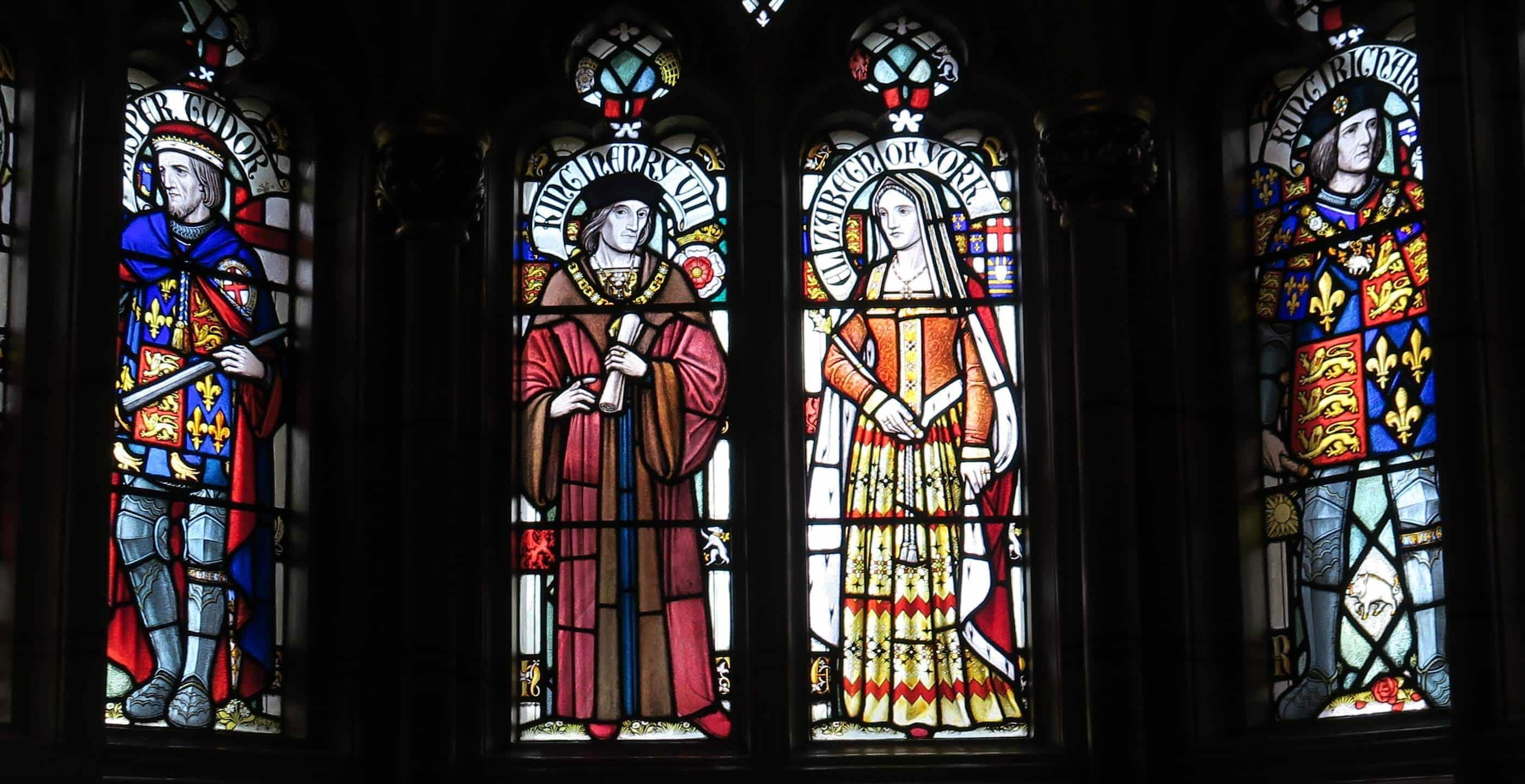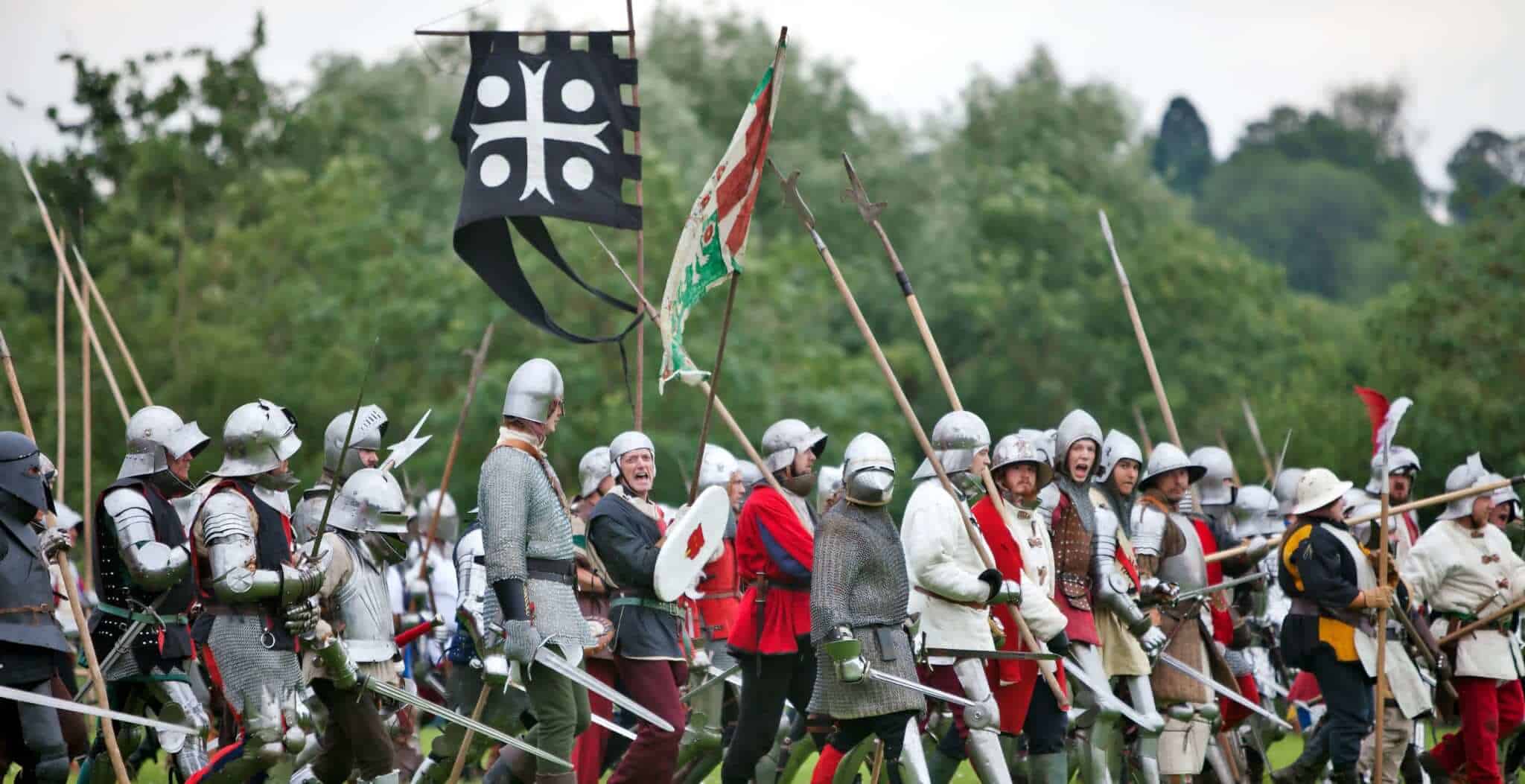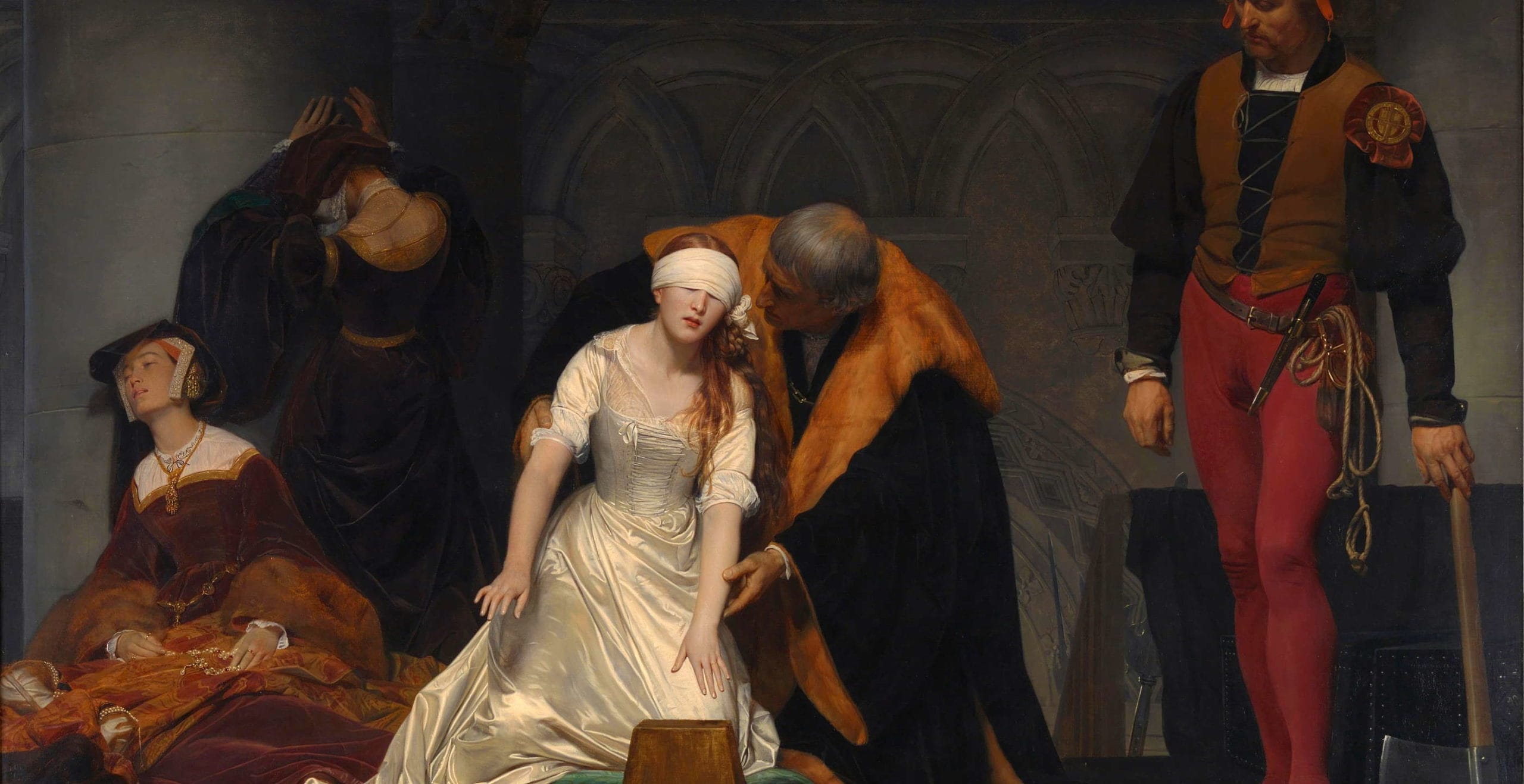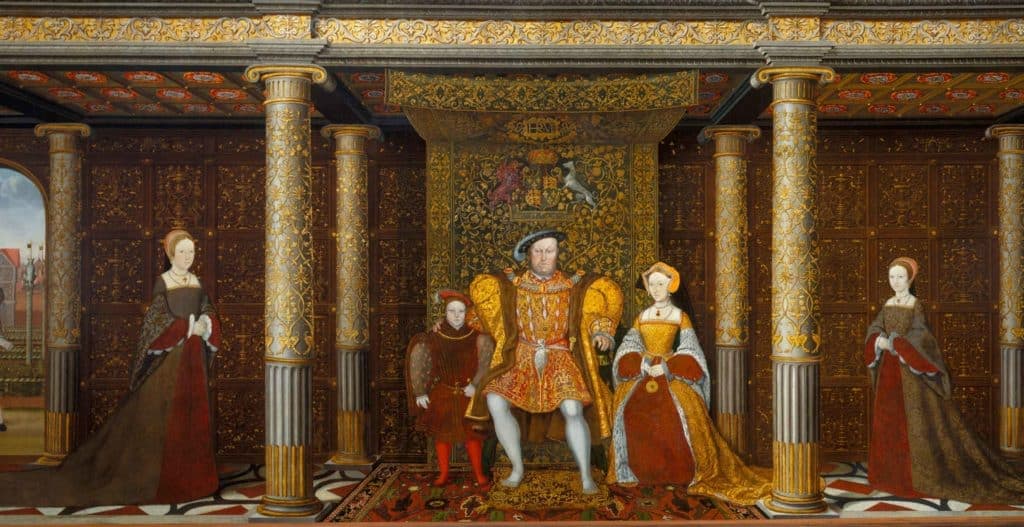When Harri Tudur, better known as Henry Tudor outside his native Wales, ascended to the throne of England in 1485 as Henry VII, it completed an incredible rise from servants to the Princes of Wales to kings in their own right within 300 years for the family from which he hailed.
Contemporaries, much like the modern antiquarian, were aware of the Tudor Dynasty’s Welsh ancestry and the first Tudor King himself was not shy in utilising Welsh symbols for his personal badges. Dragons for example littered the Tudor court.
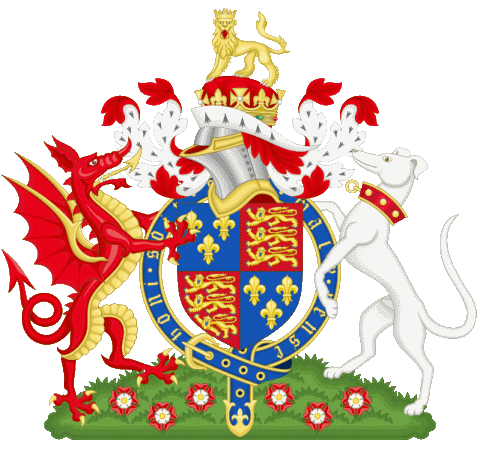
The direct Tudor line ended with the passing of arguably England’s greatest monarch Elizabeth I in 1603. but with whom did this famous dynasty begin? The end is famous, the beginnings obscure.
When discussing the Tudors as a family, the non-royal patriarch of the dynasty is accepted to be the honourable and competent 12th century noble, Ednyfed Fychan. Whilst not a prince of great renown or a famous individual from history, it is Ednyfed who is central to the later Tudor story for two prominent reasons.
Firstly, it was through his sheer hard work that he established his family and offspring as invaluable servants to the Gwynedd Princes, thus ensuring his future descendants’ influence in the governance of the region.
Secondly, Ednyfed married a South Welsh Princess with a prestigious bloodline, which gave his children royal connections.
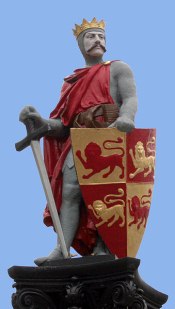 It is fair to say then that this ardent statesman could arguably be credited with being the patriarch of the Tudor family in that he was the first notable male-line ancestor of the later Tudor Kings.
It is fair to say then that this ardent statesman could arguably be credited with being the patriarch of the Tudor family in that he was the first notable male-line ancestor of the later Tudor Kings.
Ednyfed Fychan was born around 1170 and would prove to be a warrior of a man who assiduously served Llywelyn the Great (pictured right) and his son Prince Dafydd ap Llywelyn as seneschal of the Kingdom of Gwynedd.
The most basic function of a seneschal, or ‘distain’ in Welsh, was to supervise feasts and domestic ceremonies and they were sometimes referred to as stewards. As valued and loyal soldiers, these seneschals were also occasionally required to dispense justice within the kingdom and could be relied on to represent the Princes in their absence as well as witnessing and verifying important Princely charters. In many respects one could consider the seneschal to be a kind of Chief Councillor or even an early version of a Prime Minister for the Kingdom, and would in essence be the most important and valued official in employ.
North Wales had always been a tribal region and in order to resist English domination the need to implement a feudal system with greater central control was imperative. This bureaucratic reorganisation from the Princes of Gwynedd allowed Ednyfed Fychan and his descendants to prosper, securing a place amongst the ruling and administrative elite of the region.
Ednyfed himself was considered to have been a valiant and courageous warrior as well as having the ruthless streak needed for warfare in the Middle Ages. He is said to have come to prominence whilst in combat against the army of Ranulph de Blondeville, 4th Earl of Chester, who attacked Llywelyn at the behest of King John of England. The story goes that Ednyfed beheaded three English lords in battle and carried the bloody heads to Llywelyn in tribute. This act was commemorated by his Prince by commanding him to change his family coat of arms to display three heads, a gruesome testament to his value, worth and loyalty.
Ednyfed probably came to this position of seneschal by 1216 which would have meant he was present at the council Llywelyn the Great convened at Aberdyfi, a key summit at which Llywelyn asserted his right as Prince of Wales over the other territorial rulers. Ednyfed would also have been at his sovereign’s side during the Treaty of Worcester negotiations in 1218 with representatives of the new boy-King Henry III of England. In addition to his place of privilege at such significant talks, Ednyfed was also present in his role as an experienced and proficient representative of Llywelyn in a consultation with the King of England in 1232, undoubtedly offering his valued input during the tense discussions.
His loyalty to his King was appreciated and he was rewarded with the titles of Lord of Brynffanigl, Lord of Criccieth and Chief Justice, further strengthening his power. In 1235 Ednyfed was also believed to have taken part in a Crusade as all God-fearing soldiers of the era strove to do, although in his case his journey was noted for the fact that Henry III himself arranged for this powerful but respected Welsh statesman to be presented with a silver cup as he passed through London.
Away from his impressive and proficient professional life, Ednyfed had estates at Brynffanigl Isaf, situated near modern day Abergele on the North Welsh coast and also at Llandrillo-yn-Rhos, now merely a suburb of Colwyn Bay better known by the anglicised name Rhos-on-Sea. It was at Llandrillo that Ednyfed built a motte and bailey castle atop the Bryn Euryn hill which was the predecessor to the 15th century manor Llys Euryn. Furthermore he also held lands in Llansadwrn and it’s not too far a stretch to assume he also had interests on Anglesey where his family controlled various seats.
Because of his loyal service to his ruler, Ednyfed was given an unusual reward in that all descendants of his grandfather Iorwerth ap Gwgon of Brynffenigl would be accorded the honour of holding their lands free of all dues to the native Kings, something which no doubt was a great benefit in the time of feudalism. The fact he was rewarded in such a way suggests he was conceivably indispensable to the two Princes and served them diligently.
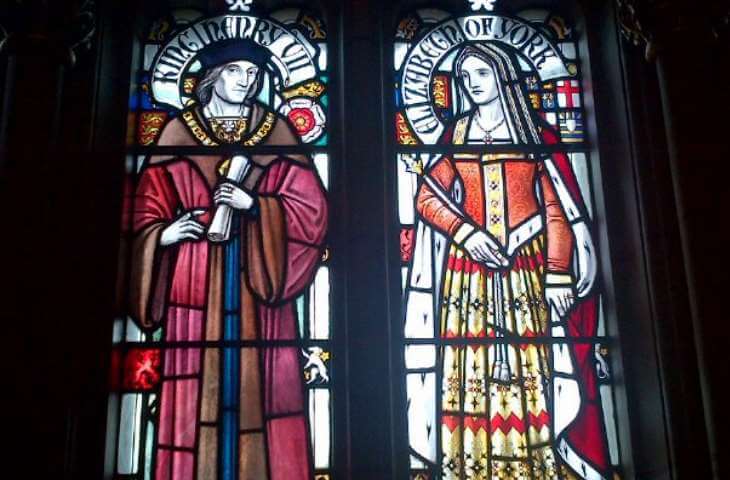
It was Ednyfed’s marriage however which would secure his place in Welsh history, as it was the matching of two historic and noble Welsh families which would ultimately produce the future King of England. Ednyfed had in fact already been married once and been blessed with a brood of sons, although the identity of this woman has yet to be sourced satisfactorily. Although probably not momentous or particularly significant at the time albeit noted by some Welsh chroniclers, the dutiful and loyal Ednyfed took Gwenllian ferch Rhys as his bride, one of the daughters of Rhys ap Gruffydd, the revered Lord Rhys, Prince of Deheubarth.
Gwenllian’s mother was Gwenllian ferch Madog, a lady who herself had a notable genealogy as the daughter of Madog ap Maredudd, the last Prince of a unified Powys. An interesting point to note, and possibly something that played a part in this union between a royal lady and a mere member of the nobility, is that Gwenllian ferch Madog’s nephew through her sister Marared was in fact Llywelyn the Great himself (pictured right), the man whom Ednyfed had served valiantly and bravely his entire life. This made Ednyfed and Llywelyn first cousins through Ednyfed’s marriage to Gwenllian ferch Rhys.
Ednyfed Fychan has been forgotten in history, his name unheralded even by the Welshmen he once served. It is possible to consider that without his diligent service to the Welsh Princes and successful marriage to a notable Princess, the Tudor Dynasty would never have had the opportunity to spectacularly usurp the Throne of England in the way they did so famously at Bosworth Field in 1485.
Ednyfed Fychan may be forgotten, but his legacy lives on today, not only in the famous Tudor monarchs of the 16th century but also today’s royal family, his direct descendants.
Biography
Nathen Amin grew up in the heart of Carmarthenshire and has long had an interest in Welsh history and the Welsh origins of the Tudors. This passion has guided him all over Wales to visit a wide variety of historic sites, which he has photographed and researched for his book ‘Tudor Wales’ by Amberley Publishing.
Website: www.nathenamin.com
